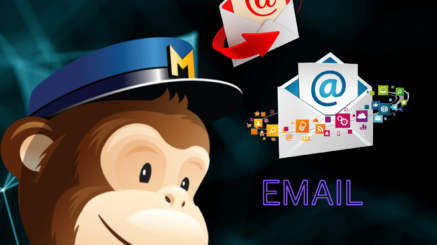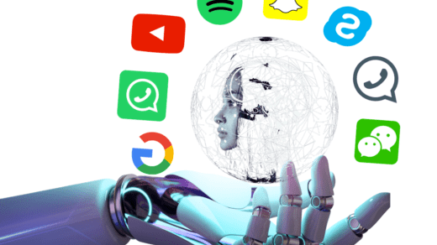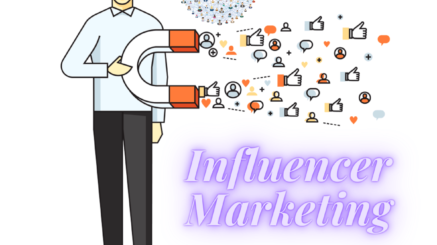Chatbot Solutions: Enhancing Customer Experience and Efficiency

In today’s fast-paced digital landscape, businesses are constantly seeking innovative ways to enhance customer experience, improve operational efficiency, and streamline processes. One solution that has gained significant traction is chatbot technology. Chatbot solutions are revolutionizing the way companies interact with their customers, providing instant support, personalized experiences, and efficient problem-solving. In this article, we will explore the world of chatbot solutions, how they work, their benefits, use cases, implementation best practices, challenges, and future trends.
- Chatbot Solutions: Enhancing Customer Experience and Efficiency
How Chatbot Solutions Work
Before delving into the advantages and applications of chatbot solutions, it is essential to understand how they function. At their core, chatbots are computer programs designed to simulate human conversations through artificial intelligence and natural language processing. These programs analyze user queries, identify the intent behind them, and provide appropriate responses or actions.
Chatbots rely on sophisticated algorithms and machine learning techniques to understand and interpret user input. Natural language processing (NLP) enables chatbots to comprehend the context, sentiment, and nuances of human language, allowing for more accurate and contextually relevant interactions. With continuous learning and training, chatbots become increasingly intelligent and capable of handling complex queries.
Benefits of Chatbot Solutions
The adoption of chatbot solutions offers numerous advantages for businesses across various industries. Let’s examine several of the main advantages:
Enhanced Customer Support and Engagement
Chatbots provide round-the-clock customer support, ensuring that users’ queries and issues are addressed promptly. With instant responses and personalized interactions, chatbots create a seamless and efficient customer experience. They can handle repetitive inquiries, provide product recommendations, assist with order tracking, and even resolve simple problems autonomously.
Increased Efficiency and Cost Savings
By automating customer interactions, chatbots significantly reduce the workload on customer support teams. This automation leads to improved operational efficiency, as fewer resources are required to handle routine queries. Also, chatbots have the ability to manage numerous conversations concurrently, resulting in quicker response times and decreased customer waiting periods. This effectiveness leads to cost savings for companies by minimizing the requirement for a sizeable customer support team..
24/7 Availability and Scalability
Unlike human agents, chatbots are available 24/7, ensuring that customers can receive support and assistance whenever they need it. This round-the-clock availability contributes to customer satisfaction and helps businesses capture leads and generate sales at any time of the day. Additionally, chatbots can scale effortlessly to handle a high volume of inquiries without compromising response quality, making them ideal for businesses experiencing rapid growth.
Types of Chatbot Solutions
There are different types of chatbots available, each with its own capabilities and functionalities. Let’s explore the three main types:
Rule-based Chatbots
Rule-based chatbots operate based on predefined rules and decision trees. They follow a set of instructions and provide predefined responses to specific queries. While they are less flexible and require manual updating, rule-based chatbots are suitable for simple and straightforward use cases, such as answering frequently asked questions or providing basic information.
AI-powered Chatbots
AI-powered chatbots leverage machine learning algorithms to understand and respond to user queries. They learn from previous interactions, adapt to user preferences, and continuously improve their responses over time. AI-powered chatbots can handle more complex conversations, understand user intent better, and provide more personalized experiences.
Hybrid Chatbots
Hybrid chatbots combine the functionalities of both rule-based and AI-powered chatbots. They can switch between predefined responses and AI-driven responses based on the complexity of the query or the confidence level of the AI model. Hybrid chatbots offer a balance between flexibility and control, making them suitable for various use cases.
Use Cases for Chatbot Solutions
Chatbot solutions find applications in a wide range of industries and business functions. Let’s explore some popular use cases:
E-commerce and Customer Service
In the e-commerce industry, chatbots can assist customers with product recommendations, order tracking, and payment processing. They can handle inquiries related to shipping, returns, and refunds. Chatbots can also analyze customer preferences and purchase history to provide personalized recommendations, enhancing the overall shopping experience.
Lead Generation and Sales Support
Chatbots can play a crucial role in lead generation and sales support. They can engage website visitors, capture contact information, and qualify leads through interactive conversations. By providing information about products or services and addressing potential concerns, chatbots can guide customers through the sales funnel, increasing conversion rates.
HR and Employee Support
Within organizations, chatbots can assist employees with HR-related queries, such as leave applications, policy information, or accessing company resources. By automating these processes, chatbots free up HR personnel to focus on more strategic tasks. Chatbots can also provide onboarding support to new employees, answering commonly asked questions and facilitating a smooth transition.
Implementing Chatbot Solutions
Implementing chatbot solutions requires careful planning and consideration. Below are a few notable instructions to adhere to:
Defining Objectives and Goals
Before implementing a chatbot, it is essential to define clear objectives and goals. Determine the specific problems the chatbot should solve and the value it should provide to users. Whether it is improving customer support, increasing sales, or streamlining processes, clearly outlining the objectives will help guide the design and development process.
Choosing the Right Chatbot Platform
There are numerous chatbot platforms available, each with its own features and capabilities. Research different platforms, and consider factors such as ease of use, scalability, integration options, and analytics capabilities. Choose a platform that aligns with your business requirements and supports the desired functionalities.
Designing Conversational Flows
Designing effective conversational flows is crucial to ensure a seamless user experience. Map out different user journeys, identify potential paths, and define the responses and actions the chatbot should provide at each step. Pay attention to the language used, ensuring clarity and simplicity. A well-designed conversational flow can enhance user engagement and increase the effectiveness of the chatbot.
Best Practices for Chatbot Solutions
To maximize the effectiveness of chatbot solutions, it is important to follow some best practices:
Providing Clear Instructions
Chatbots should provide clear instructions to users on how to interact with them. Communicate the available options, guide users through the conversation, and offer assistance when needed. Clear instructions reduce user frustration and improve the overall user experience.
Personalizing the User Experience
Personalization plays a crucial role in chatbot interactions. Leverage user data and preferences to tailor responses and recommendations. Address users by their names and provide relevant information based on their previous interactions. Personalization creates a sense of individual attention and enhances user satisfaction.
Regularly Updating and Maintaining the Chatbot
Chatbots should be regularly updated to ensure accuracy and relevance. Monitor user engagement, evaluate input, and pinpoint opportunities for enhancement.. Keep the chatbot’s knowledge base up to date, incorporating new product information, frequently asked questions, and evolving business processes. Regular maintenance and updates help maintain the chatbot’s effectiveness over time.
Challenges of Chatbot Solutions
While chatbot solutions offer numerous benefits, they also come with some challenges. Let’s explore a few common ones:
Language and Context Understanding
Understanding the nuances of human language and context can be challenging for chatbots. Ambiguous queries, slang, or cultural references can lead to misinterpretations. Training chatbots to handle a wide range of language variations and context-specific queries requires ongoing refinement and continuous learning.
Handling Complex Queries
While chatbots can handle routine inquiries effectively, they may struggle with more complex or unique queries. These queries often require human intervention or access to extensive knowledge bases. Striking a balance between automation and human involvement is crucial to ensure accurate and satisfactory responses.
Balancing Automation and Human Intervention
Finding the right balance between automation and human intervention is essential. While chatbots excel in providing quick responses, there are instances where human expertise and empathy are necessary. Identifying the appropriate moments to hand over the conversation to a human agent ensures a seamless transition and maintains customer satisfaction.
Future Trends in Chatbot Solutions
The field of chatbot solutions continues to evolve rapidly. These are a few forthcoming trends worth noting:
Voice-enabled Chatbots
As voice recognition technology advances, voice-enabled chatbots are becoming more prevalent. Users can interact with chatbots using voice commands, making interactions even more convenient and natural. Voice-enabled chatbots have the potential to revolutionize customer support and provide hands-free assistance.
Integration with Other Technologies
Chatbots are increasingly being integrated with other technologies, such as customer relationship management (CRM) systems, content management systems (CMS), and artificial intelligence platforms. These integrations enable chatbots to access relevant data, provide personalized recommendations, and streamline processes across multiple systems.
Improved Natural Language Processing Capabilities
Natural language processing technology is continuously evolving, with advancements in language understanding and sentiment analysis. Chatbots will become better equipped to understand complex queries, detect emotions, and provide more accurate and contextually relevant responses. Improved natural language processing capabilities will further enhance the user experience.
Conclusion
Chatbot solutions have emerged as powerful tools for businesses, revolutionizing customer interactions, enhancing operational efficiency, and providing personalized experiences. With their ability to automate tasks, provide instant support, and scale effortlessly, chatbots are transforming various industries. By understanding how chatbot solutions work, their benefits, and best practices for implementation, businesses can leverage this technology to stay ahead of the competition and deliver exceptional customer experiences.
FAQs
1. How much do chatbot solutions cost? Chatbot solution costs can vary depending on factors such as complexity, functionality, and customization requirements. It’s best to consult with chatbot service providers to get accurate pricing information based on your specific needs.
2. Can chatbots replace human customer support agents? Though chatbots are efficient in handling regular queries, there are situations that call for human involvement.. Chatbots and human agents can work together to provide a seamless customer support experience, with chatbots handling basic queries and human agents handling more complex or sensitive issues.
3. Are chatbot solutions only for large businesses? Chatbot solutions are beneficial for businesses of all sizes. Small businesses can leverage chatbots to provide efficient customer support, streamline processes, and enhance the overall customer experience, just like larger enterprises.
4. Can chatbots understand multiple languages? Yes, chatbots can be trained to understand and respond in multiple languages. However, language support may vary depending on the chatbot platform and the training data available for each language.
5. How long does it take to implement a chatbot solution? The implementation time for chatbot solutions depends on various factors, including the complexity of the desired functionalities, integration requirements, and the availability of resources. It’s advisable to consult with chatbot service providers or development teams to get a more accurate estimate based on your specific requirements.
Remember, chatbot solutions offer immense potential for businesses, and understanding their benefits and best practices is key to unlocking their full potential. Embrace this technology to improve customer experiences, optimize operations, and drive growth in your business.



